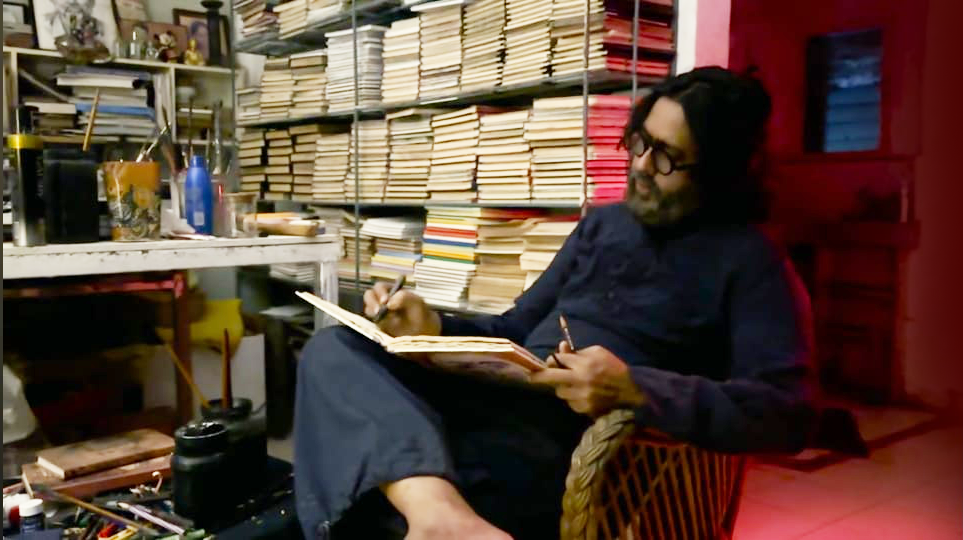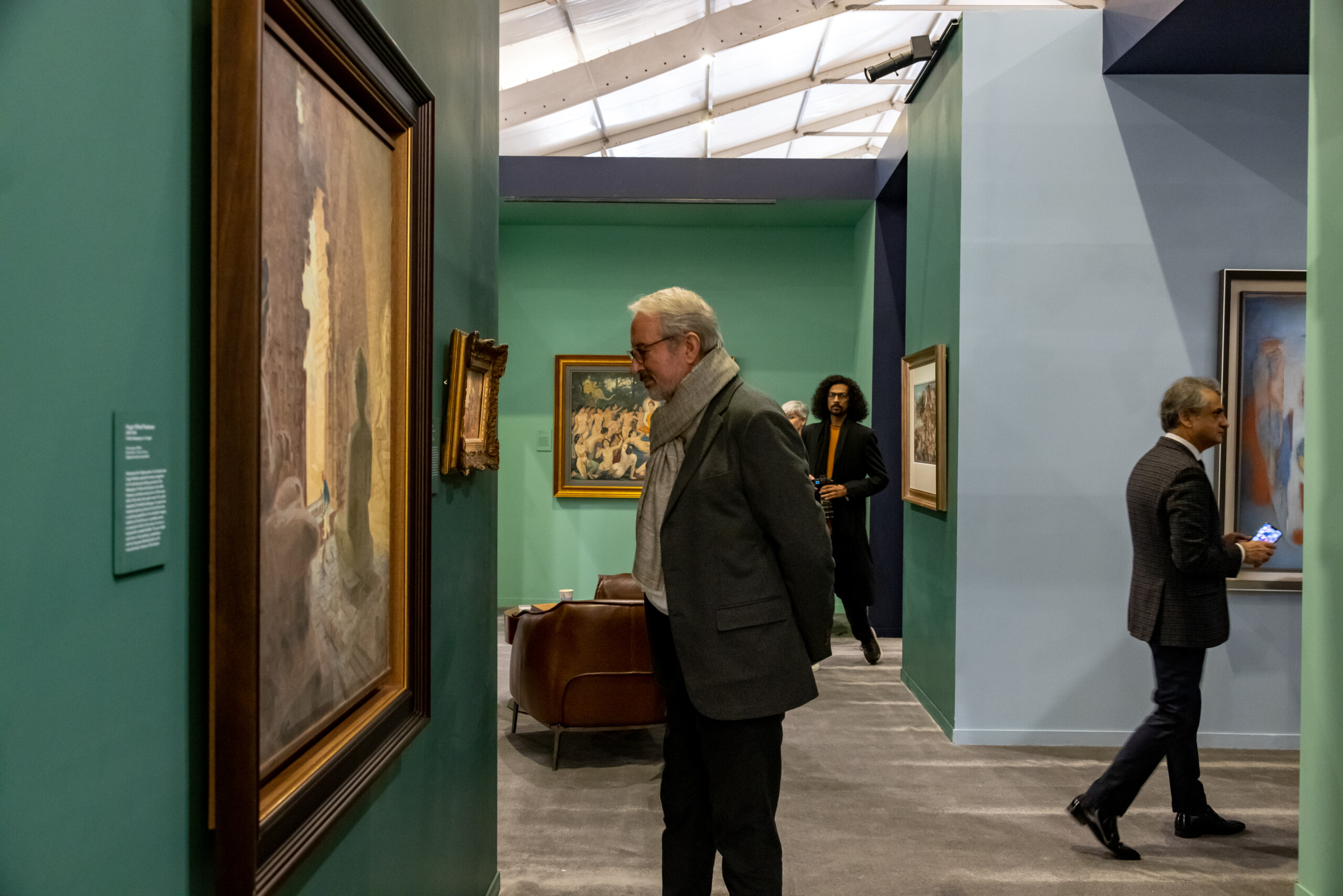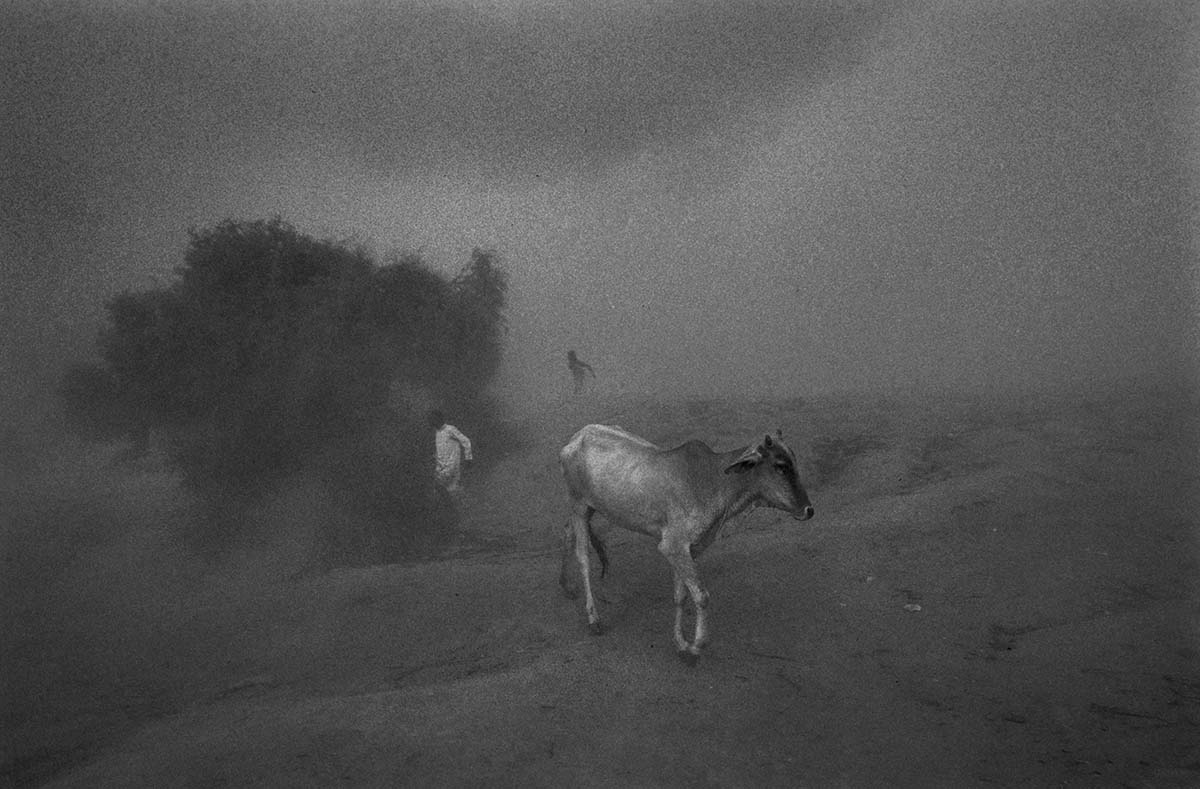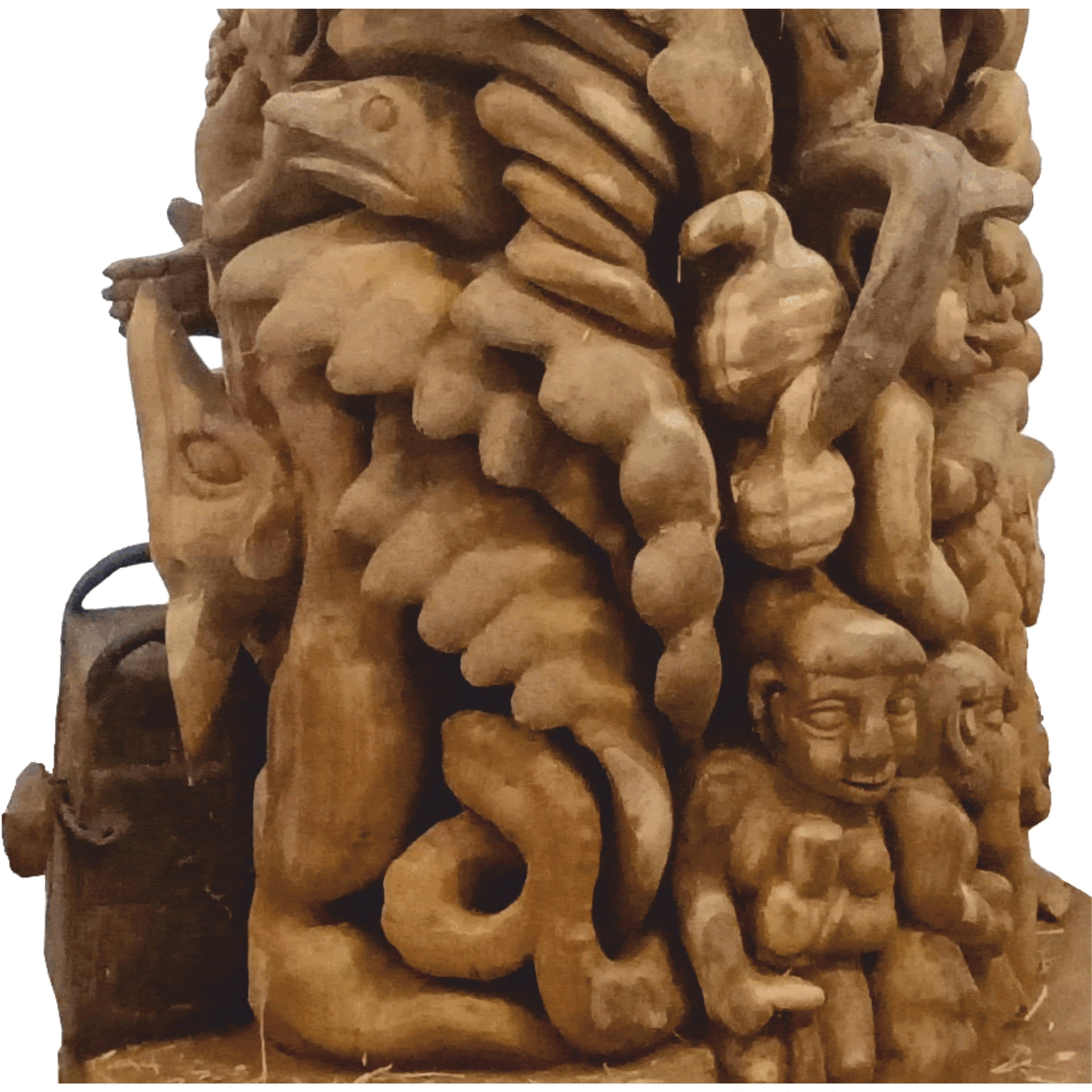Tathi Premchand’s art carries the restless pulse of Mumbai, the city he has lived and worked in since 1990. Within its crowded trains, humid air, and endless movements of people, he has found a school larger than any formal institute—a living archive of gestures, forms, and emotions. Out of this energy came not only canvases and digital series, but also one of his most enduring contributions: the drawing books, a lifelong project that began in 2005 and has grown into a monumental body of over a thousand drawings.
My Art in Books…

The drawing books are not mere sketchpads; they are intimate laboratories of thought and form. Premchand treats them as companions in which every line is a search for essence. Unlike conventional portfolios, these books are not bound by singular themes but move fluidly between nature studies, non-object abstraction, figurative explorations, and experimental mark-making. They embody the artist’s philosophy that drawing is not preparation for painting—it is painting itself, stripped to its raw bones.
From his early days, Premchand was inspired by the classical discipline of Ajanta and Ellora, where ancient murals and sculpted lines held rhythm, proportion, and the mysterious continuity of human imagination. This influence shows in his careful studies of form, especially in his nude model drawings and miniature-inspired compositions. His watercolour series reveal a softer side of his practice, where fluid washes explore transparency and impermanence, contrasting the dense, energetic strokes of his charcoal and ink sketches.
Across the drawing books, one discovers a constant shifting between representational and non-representational imagery. Scientific diagrams coexist with lyrical abstractions; a sketch of a snail’s spiral might lead to a meditation on cosmic proportions; a hurried commuter’s posture is transfigured into a study of movement. By refusing to privilege one category over another, Premchand’s books create an encyclopaedia of vision, where everyday life merges seamlessly with philosophical inquiry.
Technically, his approach to medium is expansive. Charcoal, ink, spray paint, pencil, colour pastel, and watercolour all find their place. He experiments with surfaces, layering, and even the geometry of composition itself. Many of his layouts are based on the golden ratio, with graph paper often serving as a subtle guide beneath the forms. This interplay of mathematical order and expressive gesture gives the drawings their unique tension—between calculation and spontaneity, structure and freedom.
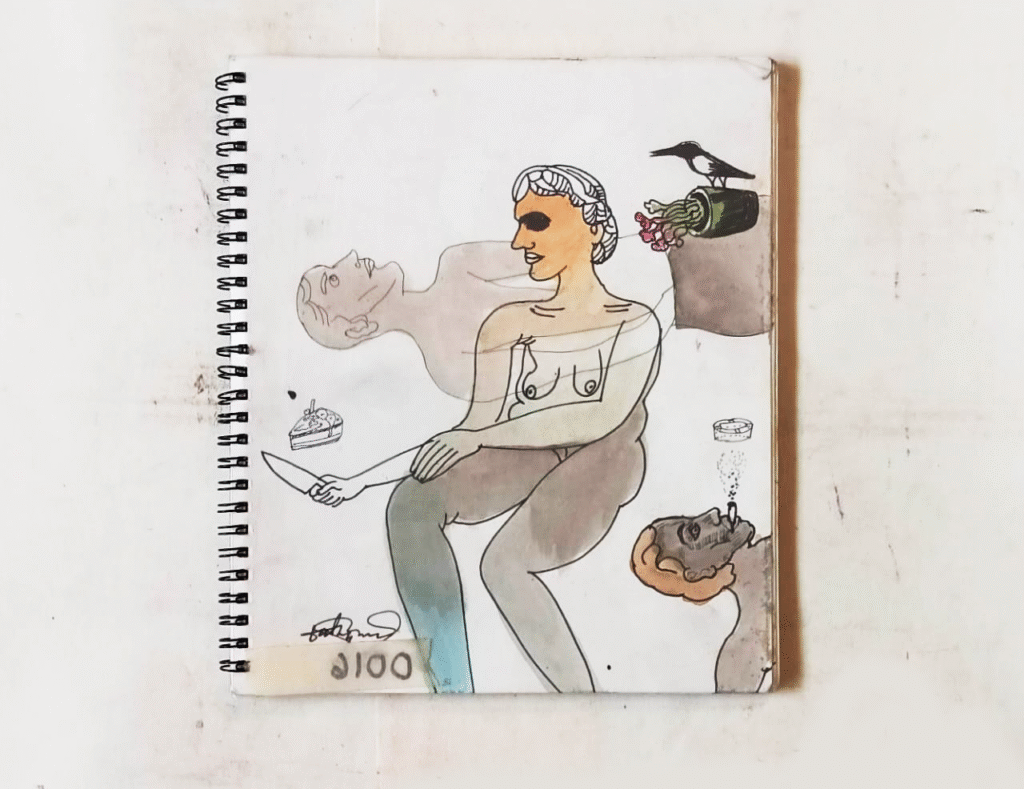
Thematically, nature plays a central role. His graphic drawings of plants, animals, and natural textures are less about representation and more about distilling rhythm. He has described snails, shells, and other organic forms as metaphors for life’s fragility and endurance. Alongside these studies, his non-object drawings push into pure abstraction, questioning what remains when reference is stripped away. In his sketchbooks, these two streams run parallel, sometimes crossing in hybrid works that are both suggestive and enigmatic.
Equally important is his engagement with the human body. His nude model studies are not academic exercises but explorations of vulnerability, sensuality, and strength. They recall his larger thematic interest in gender and identity, where man and woman appear as mirrors, opposites, and necessary counterparts. Even in quick graphite sketches, one can sense his fascination with balance—of weight, of presence, of emotional undertone.
The books also hold miniature-style drawings, intricate yet contemporary, revealing his ability to compress vast ideas into small formats. Other sections feel almost scientific—what he sometimes calls “scientist drawings”—where lines dissect and analyse phenomena with the precision of diagrams. This duality, of art as both poetic and analytical, has become a signature of his drawing practice.
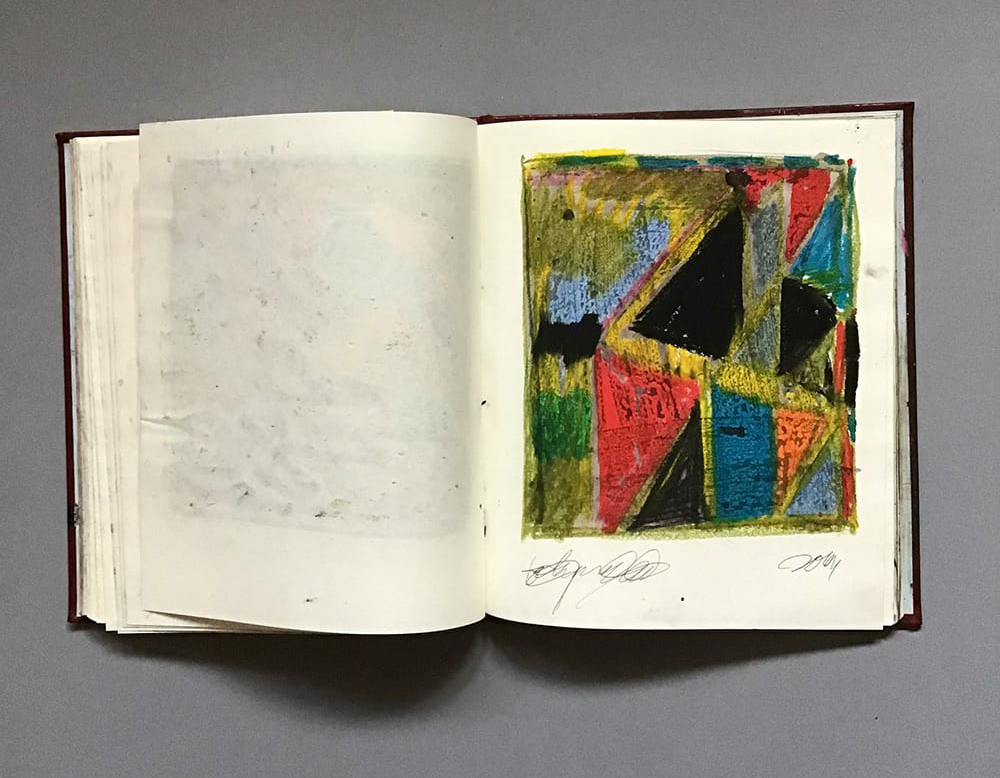
Over time, the drawing books have become more than private journals; they are an evolving archive of an artist’s mind. Unlike his canvases, which eventually travel into collectors’ homes, the books retain their unity, preserving years of experiments within their bound pages. Premchand has often remarked that his works only truly come alive once they leave the studio, but the drawing books challenge that idea—they remain alive even in their unfinished, ongoing form, each page a fragment of a larger continuum.
Today, with more than a thousand drawings collected across these volumes, the project stands as both a personal diary and a public statement. It is a reminder that drawing is not secondary but foundational, that the act of sketching is as much about thinking as it is about seeing. In the restless scrawls, delicate washes, and carefully measured lines, we encounter the full spectrum of Premchand’s artistic inquiry—discipline and play, observation and invention, silence and protest.
Tathi Premchand’s drawing books reveal an artist who never stops searching. They are less a record of what has been completed and more a map of what is still possible. In them, we find not just the history of one man’s vision, but also a mirror of the city, the culture, and the timeless human impulse to draw as a way of understanding life itself.
Text by Art Bloagazine Team
Artist Studio: 30/32, 2nd Floor, Deval Chambers, Nanabhai Lane,Flora Fountain Fort, Mumbai -400001 Maharashtra – India – Plant Earth

